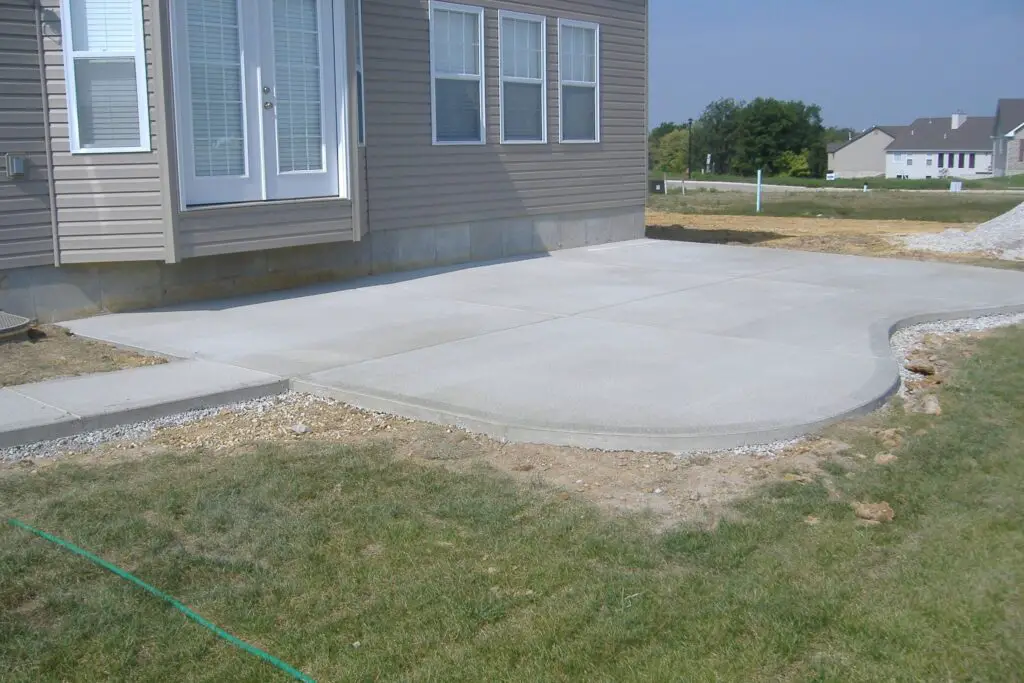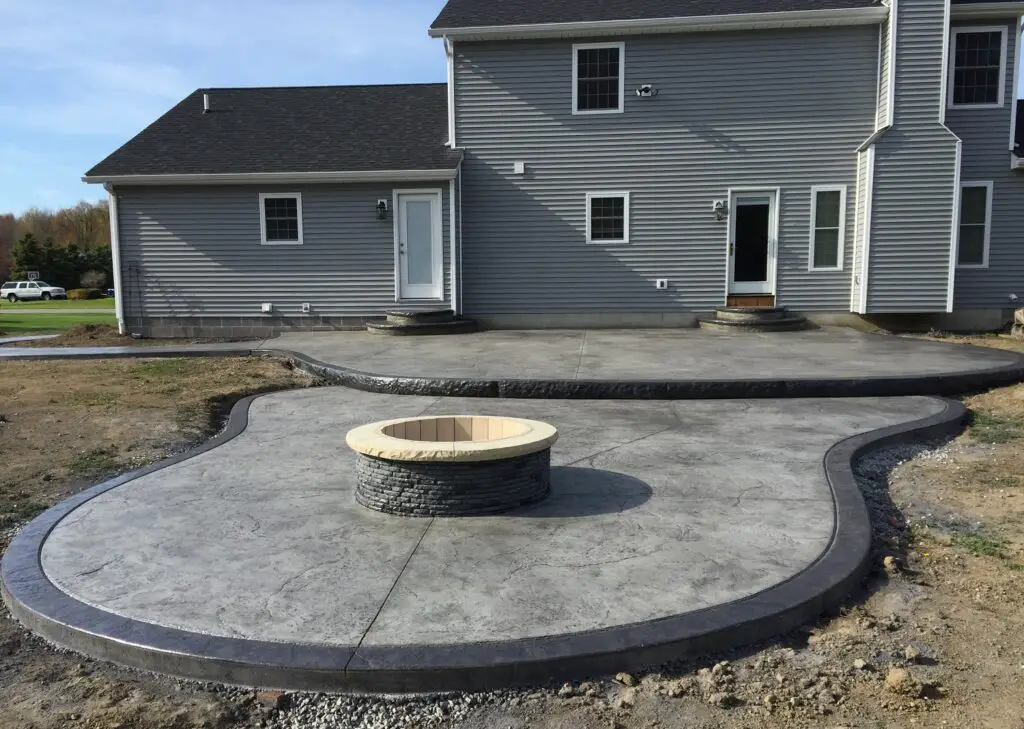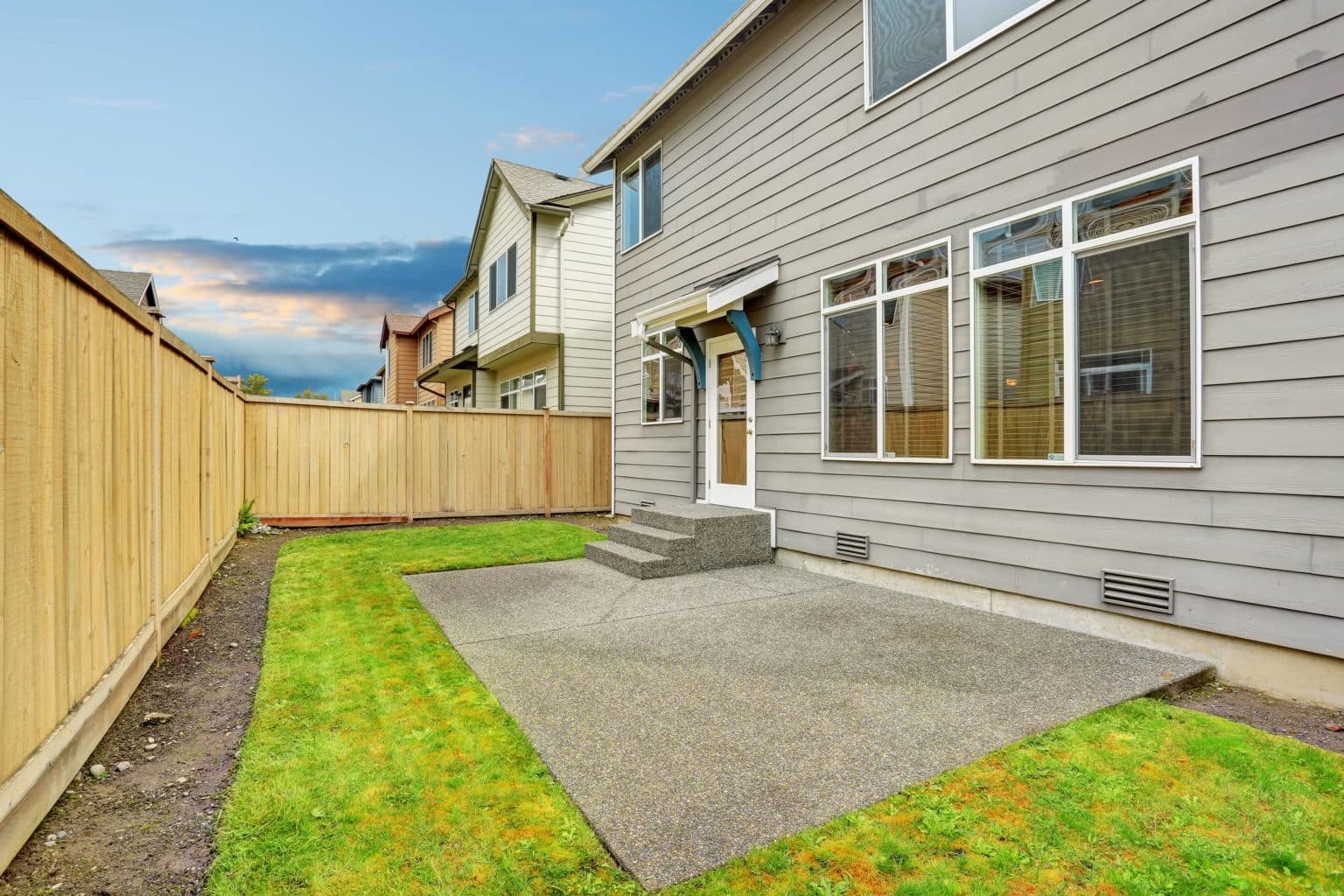How Much Does A Concrete Patio Cost
Introduction
How Much Does A Concrete Patio Cost: A concrete patio offers homeowners an array of benefits, from its long-lasting nature to the endless design possibilities it presents. However, before embarking on such a project, it is essential to have a clear understanding of the financial implications involved. This comprehensive guide aims to delve into the various factors that influence the cost of installing a concrete patio, empowering homeowners with the knowledge they need to make informed decisions.
The first and most critical factor affecting the cost of a concrete patio is its size. Larger patio home will inevitably require more materials and labor, impacting the overall budget. Moreover, the complexity of the design and any additional features, such as steps, curves, or decorative elements, can contribute to the total cost.
The type and quality of concrete used is another significant cost determinant. Various concrete mixes are available, each offering different levels of durability and aesthetic appeal. Understanding the characteristics of different concrete types will enable homeowners to choose the most suitable one for their specific needs and budget.

Is a concrete patio cheaper than a deck?
It’s cheaper to build a concrete patio in terms of both the initial cost to lay a concrete patio, as well as its cost of maintenance over time. A concrete patio costs only $4 per square foot, while a deck costs roughly $6 per square foot for lower-cost pressure treated lumber.
The cost comparison between a concrete patio and a deck can vary depending on several factors, including the materials used, size, design complexity, and labor costs. In some cases, a concrete patio may be cheaper, while in others, a deck might offer a more cost-effective solution. Let’s explore the factors that influence the cost of both options:
Concrete Patio
A concrete patio can be a more budget-friendly option, especially for smaller and simpler designs. The cost of materials for concrete is generally lower than some decking materials, such as hardwood or composite boards. Additionally, basic concrete installation might require less labor compared to complex deck construction.
Deck
The cost of a deck can vary significantly based on the materials chosen. While pressure-treated lumber tends to be more affordable, hardwoods and composite materials can be more expensive. Labor costs for building a deck can also be higher, particularly if the design includes intricate features like multiple levels, built-in seating, or railings.
Maintenance Considerations
Another important aspect to consider is the long-term maintenance cost. Concrete patios typically require less maintenance than decks. While a concrete patio may only need occasional cleaning and sealing, decks often require regular maintenance, such as staining, painting, or sealing, to prevent rot, warping, or pest infestations.
Is it cheaper to do a concrete patio?
A concrete patio costs less than patios made of stone, brick, or tile. This is because patios made of natural materials are usually higher priced and require more intensive labor to install. Some concrete contractors estimate that stamped concrete costs one-third less than the cost of other materials.
Whether a concrete patio is cheaper than other types of outdoor flooring options depends on various factors. Let’s explore some key considerations that can impact the overall cost of a concrete patio compared to alternative materials:
Material Costs
Concrete is generally more affordable than premium materials like natural stone, brick pavers, or certain types of composite decking. However, it can be more expensive than basic pressure-treated lumber used for wooden decks. Stamped or stained concrete, which provides more decorative options, may incur additional costs.
Size and Complexity
The size and design complexity of the patio play a significant role in cost. Larger patios require more materials and labor, which can increase expenses. Similarly, intricate designs, decorative patterns, or additional features like steps or seating areas will add to the overall cost.
Labor Costs
Labor costs can vary based on the region, contractor’s expertise, and current demand for construction services. Concrete patios may require less labor compared to complex decking projects, which involve more cutting, fitting, and fastening of materials.
How much does it cost to build a concrete patio?
A professionally installed concrete patio costs an average of $2,925 nationwide. Installing a new concrete patio costs an average of $2,925 nationwide. However, most homeowners end up paying between $1,580 and $4,465—or $4 to $26 per square foot, including materials and labor.
The cost to build a concrete patio can vary depending on several factors, including the size of the patio, the complexity of the design, the type of concrete used, labor costs, and the location of the project. On average, the cost per square foot for a basic concrete patio can range from $6 to $15.
Size of the Patio
The larger the patio, the more materials and labor will be required, which can increase the overall cost. Smaller patios are generally more budget-friendly.
Design Complexity
Intricate designs, decorative patterns, curves, and additional features like steps or built-in seating can add to the cost due to the additional labor and expertise required.
Type of Concrete
There are different types of concrete available, each with varying costs. Standard concrete is typically the most affordable option, while stamped or colored concrete may cost more due to additional treatments and aesthetic appeal.
How long does concrete patio last?
30 -50 years
Some say that a concrete patio may last as long as 30 -50 years. However, if you live in the Northern Hemisphere, the climate’s yearly freeze/thaw cycles shorten concrete’s life expectancy. Still, the average 25 years lifespan is a long time.
A well-constructed and properly maintained concrete patio can last for several decades, making it one of the most durable outdoor flooring options. The longevity of a concrete patio depends on various factors, including the quality of the materials used, the construction techniques employed, the climate and environmental conditions, and the level of maintenance it receives.
Quality of Materials and Construction
Using high-quality concrete and proper construction techniques is crucial for the longevity of the patio. When mixed and poured correctly, concrete becomes a solid, sturdy surface that can withstand heavy foot traffic and weather conditions.
Climate and Environment
Extreme weather conditions, such as freezing temperatures, heavy rainfall, or intense heat, can impact the lifespan of a concrete patio. In areas with harsh winters, the expansion and contraction of water freezing and thawing may cause cracks over time. Similarly, exposure to constant moisture or salt (near coastal areas) can affect the concrete’s durability.
Proper Maintenance
Regular maintenance can significantly extend the life of a concrete patio. Sealing the concrete every few years helps protect it from moisture, UV rays, and staining. Additionally, promptly repairing any cracks or damage and cleaning the surface regularly can prevent deterioration.
Is a concrete patio a good idea?
Concrete: Built to Last
In addition, since concrete has such a high tensile strength, it can hold a lot of weight and pressure over time, compared to slabs, bricks, and other materials. Concrete offers a cohesive, cost-effective option for backyard patios.
A concrete patio can be a fantastic idea for many homeowners, offering numerous advantages that make it a popular and practical choice for outdoor living spaces. Let’s explore some of the reasons why a concrete patio is a good idea:
Durability
Concrete is a highly durable material, capable of withstanding heavy foot traffic, extreme weather conditions, and the test of time. A well-built concrete patio can last for several decades with proper maintenance.
Versatility in Design
Concrete offers a wide range of design options. It can be poured into various shapes and sizes, allowing homeowners to customize their patio according to their preferences. Additionally, stamped or colored concrete can mimic the look of natural stone or pavers at a fraction of the cost.
Low Maintenance
Compared to other outdoor flooring options, a concrete patio is relatively low maintenance. Periodic cleaning and resealing every few years are typically all that is needed to keep the surface looking its best.
How thick should a concrete patio be?
Pouring Concrete Patio: A First Timer’s Guide | Family Handyman
How thick will your patio slab be? Four inches is the minimum thickness for a concrete patio. You’ll want to make it six to eight inches thick if the patio will support a structure such as a gazebo or hot tub.
The thickness of a concrete patio depends on several factors, including the type of soil or subgrade, the expected load-bearing capacity, and any specific local building codes or regulations. However, in most residential applications, a typical concrete patio thickness is 4 inches (10 centimeters).
Soil and Subgrade Conditions
The stability and load-bearing capacity of the soil and subgrade beneath the concrete patio are crucial considerations. If the soil is weak or prone to settling, a thicker concrete slab may be required to distribute the load more effectively.
Expected Use and Load
The intended use of the patio and the weight it needs to bear will influence the recommended thickness. For standard residential use, a 4-inch thick concrete patio is typically sufficient. However, if heavy equipment or vehicles will be parked on the patio, a thicker slab may be necessary.
Local Building Codes
Local building codes or regulations may specify minimum requirements for concrete patio thickness to ensure structural integrity and safety. It’s essential to consult with local authorities or building professionals to ensure compliance.
Do you need gravel under concrete patio?
Because concrete is a very porous material, it will absorb any moisture that it contacts. This can cause pooling. Without crushed stone, pooling water will settle under it and erode your slab. Adding a layer of crushed stone will add proper drainage, as well as create a barrier between your slab and the ground.
In many cases, it is recommended to have a layer of compacted gravel or crushed stone beneath a concrete patio. This layer serves as a foundation and provides several important benefits that contribute to the longevity and stability of the patio:
Drainage
Gravel helps with proper drainage by allowing water to move away from the concrete surface. This helps prevent water from pooling underneath the patio, which could lead to erosion, soil settling, and potential damage to the concrete over time.
Stability
A compacted layer of gravel provides a stable base for the concrete patio. It helps distribute the weight of the concrete evenly and reduces the risk of settling or shifting due to uneven ground conditions.
Frost Protection
In regions with freezing temperatures, a layer of gravel can act as a barrier, minimizing the risk of frost heave that may occur when water in the soil freezes and expands, potentially causing damage to the concrete.
Can I pour my own concrete patio?
It is possible to build an attractive concrete patio yourself, but careful planning and preparation is necessary. Be sure to place all the concrete at once; a big patio can be broken down into smaller manageable sections using 2×4’s.
Yes, it is possible to pour your own concrete patio as a DIY project, but it requires careful planning, preparation, and some level of experience with construction tasks. Pouring concrete is a complex process that requires attention to detail, proper equipment, and knowledge of concrete mixing and placement techniques. Here are some key factors to consider before deciding to pour your own concrete patio:
Research and Knowledge
Before starting the project, thoroughly research the process of pouring concrete, including the right type of concrete mix, appropriate tools, and techniques. Understanding the basics of concrete work is essential to ensure a successful outcome.
Site Preparation
Proper site preparation is crucial for a durable and long-lasting patio. This includes clearing the area, leveling the ground, and adding a compacted gravel base or sand for stability.
Safety
Concrete work involves heavy materials and equipment, so ensuring your safety and the safety of others is of utmost importance. Protective gear, such as gloves, eye protection, and sturdy footwear, should be worn during the project.

Conclusion
Determining the cost of a concrete patio involves considering various factors that contribute to the overall expenses. The size and complexity of the patio, the type and quality of concrete used, labor costs, and regional variations all play a crucial role in shaping the final budget for this outdoor addition.
Homeowners must carefully plan and budget for their concrete patio project to ensure they achieve their desired outcome without encountering unexpected financial burdens. Understanding the cost dynamics allows them to make informed decisions, striking a balance between their vision for the patio cost and their budgetary constraints.
When embarking on a concrete patio project, it is essential to seek estimates from reputable contractors, taking into account their experience and expertise. While cost is a significant consideration, compromising on the quality of materials or workmanship may lead to future maintenance issues and higher expenses down the line. Striking a balance between cost and quality ensures that the patio not only meets the budget but also stands the test of time.








